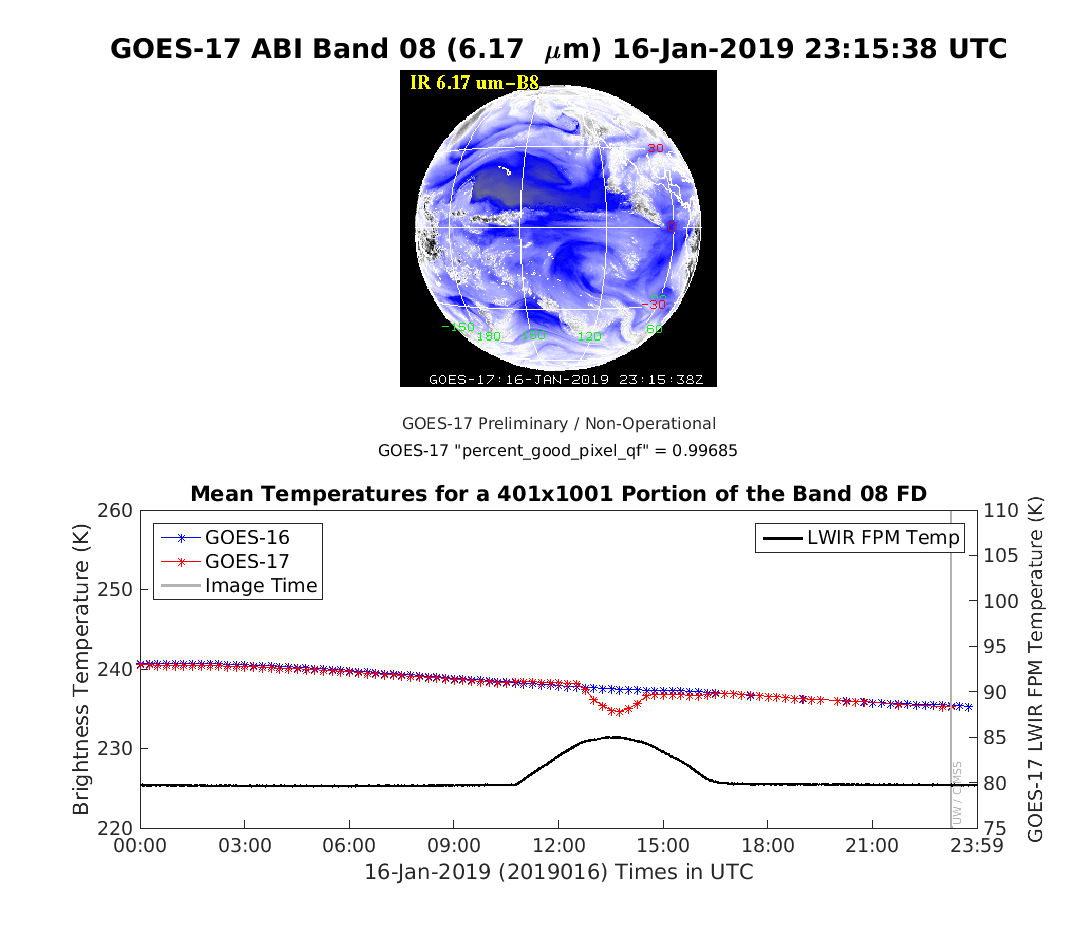
[ Archive ]

 |
CIMSS-NOAA Weekly Report [ Archive ] |
 |
ASPB AND CIMSS WEEKLY HIGHLIGHTS FOR THE WEEK ENDING JANUARY 18, 2019
IN THE PRESS:
SSEC and CIMSS Scientists in the News: Scientists at the University of Wisconsin-Madison (UW) Space Science and Engineering Center (SSEC) and the Cooperative Institute for Meteorological Satellite Studies (CIMSS) provide expert commentary, interviews, and imagery to news media and participate in events to promote science. In the news this week: 1) SSEC News published Through the Atmosphere magazine featuring our latest field campaign to the Philippine Sea to study air/sea interaction, drought research that uses satellite data to help farmers better prepare, the future of atmospheric sounding satellites, a Q&A with SSEC’s new director Brad Pierce, and more. (https://go.wisc.edu/23y3g8) 2) UW News and SSEC News published, "UW research instrument returns from 22,000-mile seaward journey" about SSEC's portable research lab fitted for the High Spectral Resolution Lidar. (https://go.wisc.edu/1z8c0y, https://www.ssec.wisc.edu/news/articles/11578) 3) CIMSS Satellite blog contributor Scott Bachmeier published posts on the "Rope cloud in the East Pacific Ocean" (Jan. 16), "Dry aloft over the western US" (Jan. 13), "Stereoscopic views of a small storm over the North Pacific Ocean" (Jan. 16), "Blowing snow in southern Manitoba and the Red River Valley" (Jan. 15), and "Stereoscopic Views of a storm on the West Coast of the United States" (Jan. 14). Read more at the CIMSS Satellite Blog: http://cimss.ssec.wisc.edu/goes/blog/. (J. Phillips, SSEC, 608-262-8164, S. Bachmeier, CIMSS, S. Lindstrom, SSEC, E. Verbeten, SSEC)
(Click image to enlarge)
Figure: Through the Atmosphere, Winter/Spring 2019.
ITEMS FOR THE ADMINISTRATOR:
ITEMS FOR THE ASSISTANT ADMINISTRATOR:
ITEMS FOR THE OFFICE DIRECTOR, STAR:
Mooney Receives ESIP Recognition: Margaret Mooney from NOAA's Cooperative Institute for Meteorological Satellite Studies (CIMSS) was one of three recognized at the Earth Science Information Partners (ESIP) meeting in Washington DC this week "for bringing about positive change in ESIP and inspiring others to take action!" (M. Mooney, CIMSS/SSEC, 608-265-2123)
Percent Good Pixels Included on GOES-17 Statistics Web Page: To help users determine when GOES-17 Advanced Baseline Imager (ABI) data quality is significantly impacted by the instrument heating issue, the attribute percent_good_pixel_qf has been added to statistical plots being generated at the Cooperative Institute for Meteorological Satellite Studies (CIMSS). That attribute is a percentage of pixels that have data quality flags (DQFs) indicating a good pixel or conditionally usable pixel. If a pixel is out of range (saturated, or under-saturated), or has no value (missing), then it will lower that percentage, which is typically close to 100%. As detectors are heated beyond their ability to perform on the GOES-17 ABI, they get flagged as saturated and lower the percent_good_pixel_qf score. Until better data, such as focal plane module temperatures, are included in the data stream for all users, this attribute is a less-than-perfect way of automating a mitigation response to impacted data. See it in action at http://cimss.ssec.wisc.edu/goes-r/abi-/band_statistics_imagery.html. (M. Gunshor, CIMSS, 608-263-1146)
 (Click image to enlarge)
(Click image to enlarge)
Figure: Sample figure of GOES-17 vs GOES-16 average brightness temperatures plotted vs GOES-17 Focal Plane Module (FPM) temperature, including the percent_good_pixel_qf attribute value. Similar figures are generated hourly for each band of the ABI for the full disk sector. http://cimss.ssec.wisc.edu/goes-r/abi-/band_statistics_imagery.html
ITEMS FOR THE DIVISION CHIEF, CoRP:
CIMSS Blog Posts Show Three Dimensions: Geostationary satellite data can be remapped to the same projection and plotted side-by-side to provide image pairs that simulate three dimensions (if the viewer can cross their eyes and focus on the image in the center). This was done for two cases this week, a case over California using GOES-16 and GOES-17 (http://cimss.ssec.wisc.edu/goes/blog/archives/31351; GOES-17 is still preliminary and non-operational) and a case over the north Pacific using GOES-17 and Himawari data (http://cimss.ssec.wisc.edu/goes/blog/archives/31368). (S. Lindstrom, CIMSS, 608 263 4425)

VISITORS:
NEXT WEEK:
LOOKING AHEAD:
| Archived Weeklies Page | Submit a report item |